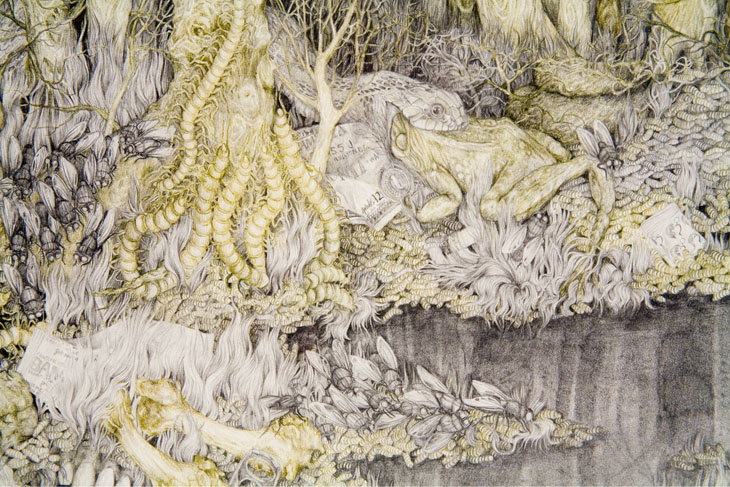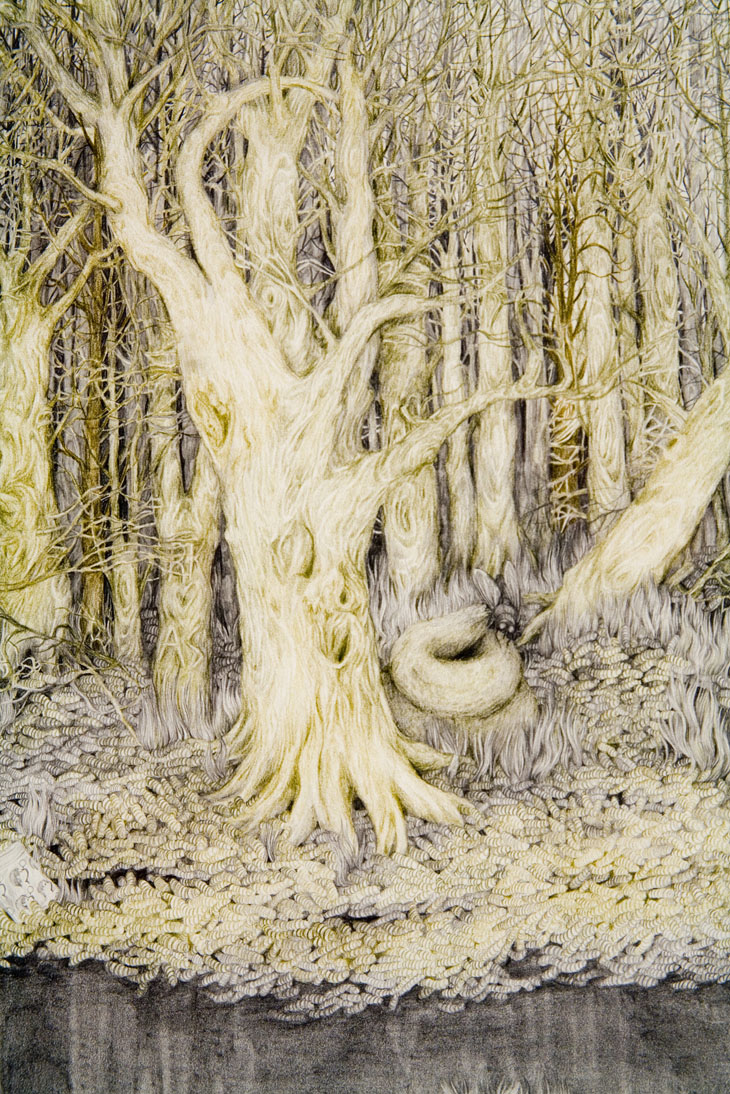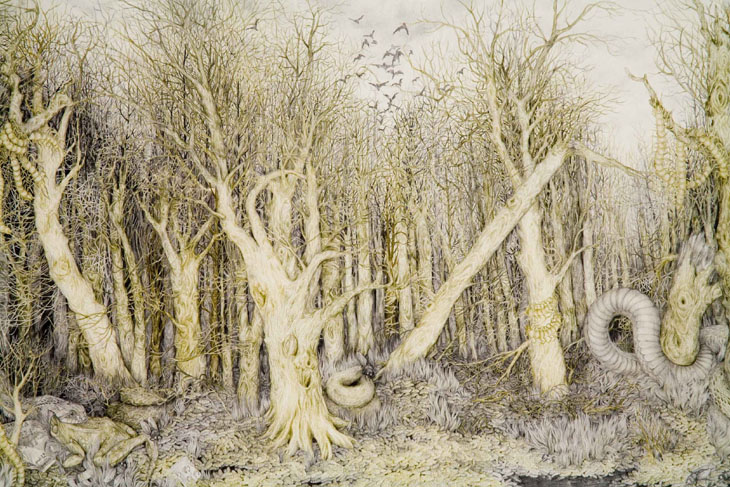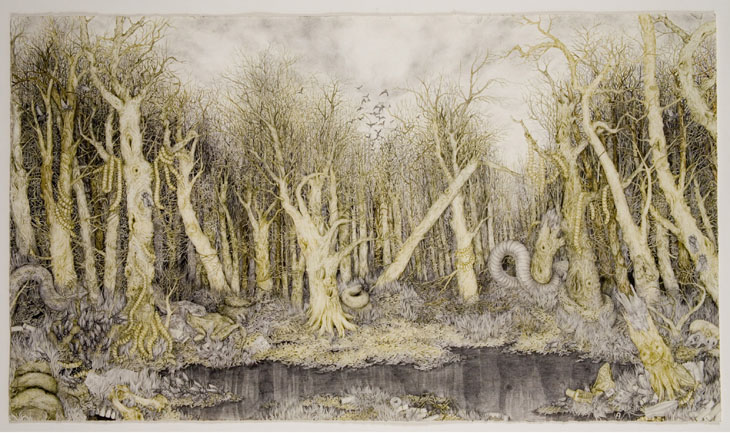



Aurel Schmidt
Aurel Schmidt’s Body Swallows World is inspired, in part, by Théodore Rousseau’s The Forest in Winter at Sunset (c1846-67) in the collection of the Metropolitan Museum of Art in New York, where the artist lives and works.
Rousseau’s painting– a huge and gloomy autumnal scene, with complex interlacing of tree branches and roots – provided a template for Schmidt’s investigation of landscape as both external terrain and projection of the inner life of the body. Taking its title from Mikhail Bakhtin’s 1940s book Rabelais and his World (in which the author discusses the carnivalesque, a chaotic celebration of bodily sensuality), Schmidt’s work treads a fine balance between the grotesque and the refined. A meticulously rendered sylvan scene of dense woodland at the edge of a still lake dissolves into teeming life on closer inspection.
That delicate forest floor in gentle ochres and greys is, in fact, a carpet of squirming maggots; what looked like a tree stump is a huge curl of turd, with inquisitive fly; fat, intestinal caterpillars dangle from the branches, like anacondas. As an allegory of worldly decay, Schmidt’s work embeds the horror of human decomposition in an image of its opposite: the bucolic, regenerative landscape of Rousseau’s Romantic escapism. But Bakhtin’s carnival is here too: there’s a wild and gleeful celebration at the heart of Schmidt’s work, with its festoons of squiggling creepy-crawlies standing in for streamers and bunting, a party at the end of the world where no-one gets out alive.



